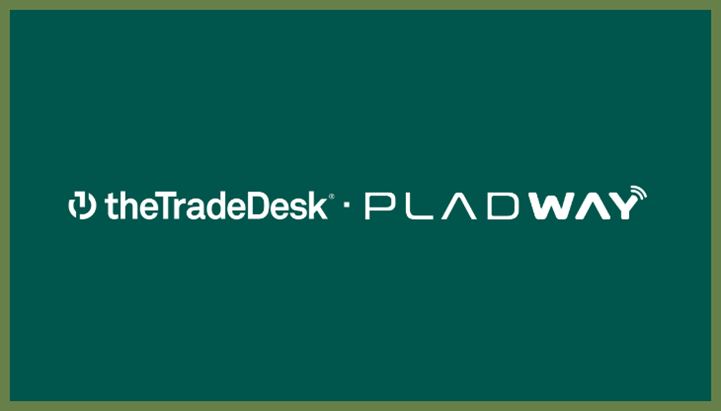La Pubblicità nelle Stazioni Ferroviarie: L’Ascesa del pDOOH
| By pladway | 0 Comments

Le stazioni ferroviarie sono tra i luoghi più trafficati ogni giorno. Per questo motivo, rappresentano un’opportunità unica per il Programmatic Digital Out of Home (pDOOH).
Ogni giorno, milioni di persone transitano nelle stazioni. Di conseguenza, il pDOOH consente ai brand di raggiungere un pubblico diversificato in tempo reale. Inoltre, offre esperienze personalizzate e contestuali, migliorando l’impatto delle campagne pubblicitarie.
Perché il pDOOH nelle stazioni ferroviarie è così efficace?
Alto traffico e targeting preciso
Le stazioni ferroviarie offrono accesso a milioni di pendolari e viaggiatori. In effetti, nel 2022 il traffico ferroviario in Europa ha raggiunto 7,3 miliardi di passeggeri. Inoltre, solo nelle principali stazioni italiane si sono registrati 750 milioni di passaggi nel 2023.
Grazie al pDOOH, i brand possono sfruttare dati demografici, flusso di traffico e orari per adattare i messaggi pubblicitari in tempo reale. Di conseguenza, le campagne risultano più efficaci e mirate, aumentando le possibilità di coinvolgimento del pubblico.
Creatività dinamica e interattività
Uno dei maggiori vantaggi del pDOOH è la possibilità di integrare QR code, realtà aumentata e aggiornamenti basati su meteo o eventi locali. Ad esempio, Virgin Trains ha utilizzato schermi digitali per mostrare in tempo reale i prezzi dei biglietti. Di conseguenza, il coinvolgimento del pubblico è aumentato fino al 40%.
Sostenibilità
Oltre ai benefici in termini di efficacia, il pDOOH contribuisce alla sostenibilità ambientale. Infatti, il passaggio dalla pubblicità tradizionale al pDOOH riduce l’uso di carta, inchiostro e trasporto dei materiali. Questo, a sua volta, porta a una riduzione delle emissioni di CO2 fino al 60% per campagna.
Misurabilità e trasparenza
Un ulteriore punto di forza del pDOOH è la possibilità di monitorare l’andamento delle campagne in tempo reale. A differenza della pubblicità tradizionale, il pDOOH utilizza tecnologie avanzate come sensori e fotocamere. Di conseguenza, i brand possono ottenere dati dettagliati su visualizzazioni, coinvolgimento e conversioni, ottimizzando così le strategie pubblicitarie.
Targeting preciso
Un altro vantaggio chiave del pDOOH è la possibilità di raccogliere dati demografici e comportamentali in tempo reale. Grazie a ciò, gli annunci diventano sempre più mirati e pertinenti.
Ad esempio, durante le ore di punta le pubblicità possono rivolgersi ai professionisti in viaggio verso il lavoro. Al contrario, nei weekend possono essere orientate verso famiglie o turisti.
Creatività dinamica e personalizzazione
Un aspetto fondamentale del pDOOH è la capacità di adattare gli annunci in base a orario, condizioni meteo e altri fattori esterni.
Per esempio, durante un’ondata di caldo, un brand di bevande può promuovere drink rinfrescanti. Viceversa, in caso di pioggia, può sponsorizzare cappotti o ombrelli.
Inoltre, l’ottimizzazione creativa dinamica (DCO) permette di modificare i messaggi pubblicitari in tempo reale. Non a caso, secondo VIOOH, le campagne dinamiche hanno registrato un’efficacia superiore del 35% rispetto a quelle statiche.
A conferma di ciò, un’indagine di Ocean Outdoor ha evidenziato che il pDOOH nelle stazioni aumenta il coinvolgimento degli utenti del 25%.
Infine, il 70% dei brand considera il pDOOH più efficace in termini di ROI rispetto alla pubblicità tradizionale.
Le stazioni ferroviarie: un’opportunità strategica per il pDOOH
Alla luce di questi dati, le stazioni ferroviarie si confermano un asset strategico per il pDOOH. Non sorprende, quindi, che Pladway ottenga il 35% delle revenue proprio da campagne programmatiche nelle stazioni. Questo dimostra quanto questi spazi siano fondamentali per incrementare brand awareness ed engagement.
Tendenze emergenti nel pDOOH ferroviario
Integrazione con mobile e retargeting
Attualmente, una delle tendenze più rilevanti è l’integrazione del pDOOH con i dispositivi mobili. In questo modo, i brand possono mostrare annunci rilevanti sui display nelle stazioni e poi retargetizzare gli stessi utenti sui loro smartphone.
Dati in tempo reale per l’ottimizzazione delle campagne
Oltre a orari e condizioni meteo, l’uso di dati in tempo reale sta diventando essenziale per migliorare le campagne pubblicitarie. Ad esempio, durante eventi speciali o festività, i brand possono modificare i loro messaggi per massimizzare l’efficacia della campagna.
Schermi interattivi e realtà aumentata
Un’altra innovazione chiave è l’uso di schermi interattivi e tecnologie di realtà aumentata nelle stazioni ferroviarie. Infatti, questi strumenti permettono ai viaggiatori di interagire direttamente con i contenuti pubblicitari.
Un esempio di successo è la campagna AR di Pepsi nelle stazioni di Londra, che ha portato a un aumento delle vendite del 35%.
Il futuro del pDOOH nelle stazioni
Grazie ai continui progressi nell’intelligenza artificiale e nel machine learning, il pDOOH diventerà sempre più sofisticato. In particolare, sarà possibile analizzare il comportamento dei viaggiatori e offrire pubblicità altamente personalizzate.
Non a caso, secondo alcune stime, il mercato globale del DOOH raggiungerà i 26 miliardi di dollari entro il 2027, con un tasso di crescita annuo del 10,1%. Le stazioni ferroviarie, grazie al loro flusso costante di viaggiatori, saranno un elemento chiave di questa espansione.
Conclusione
Alla luce di questi dati, il pDOOH nelle stazioni ferroviarie si conferma una soluzione in forte crescita. Pertanto, i brand che desiderano raggiungere milioni di consumatori con annunci personalizzati e misurabili in tempo reale non possono ignorare questa opportunità.
Pladway ti offre la possibilità di sfruttare al meglio il pDOOH nelle stazioni ferroviarie. Vuoi scoprire come rendere più efficace la tua strategia pubblicitaria? Contattaci per una consulenza personalizzata!
















